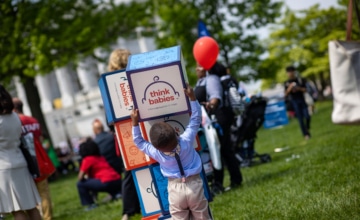Poverty numbers released from the Census Bureau this week showed the astonishing effectiveness of key government services in alleviating poverty among families with children.
The Bureau uses two measures for poverty. The first, the “official poverty rate,” measures only income. Notably, the official poverty rate for children did not change significantly between 2020 and 2021. However, the “Supplemental Poverty Measure” (SPM) rate includes not only income, but also benefits from various governmental services including housing subsidies, the Supplemental Nutrition Assistance Program (SNAP) and the Special Supplemental Nutrition Program for Women, Infants, and Children (WIC), and refundable tax credits such as the expanded Child Tax Credit (CTC). Under that measure, the child poverty rate dropped by 46 percent from 2020 to 2021. The rate for young children was not readily available, and while all groups benefited, disparities by race and ethnicity remained. But with these supports, the poverty rate for all children was at 5.2 percent, its lowest recorded level ever. Most important, the Census credits the expanded, fully refundable CTC alone for lifting 2.9 million children, including one million children under the age of 6, out of poverty. This drop is all the more remarkable in view of the hardships for families with young children during the pandemic and represents a triumph of family-centered policy.
This is incredible news for infant-toddler advocates, who know that alleviating poverty can help promote stronger early development for infants and toddlers whose rapidly developing brains are most sensitive to the material hardship and accompanying family stress that economic insecurity brings. Unfortunately, the temporary expansion of the CTC ended at the end of 2021. This new data provides the greatest argument for its permanent expansion, especially for families with the lowest incomes who are currently excluded. Get Involved below to ask your Members of Congress to act on this powerful new data.
In another triumph for families, last week the Administration released a final rule on Public Charge determinations, restoring protections for immigrant families who access supports like Medicaid, housing and nutrition assistance. The rule provides additional relief for the one in four children under 5 years old in the United States with at least one immigrant parent. While immigrant families are more likely to face economic hardship, under the previous Administration, they were actively discouraged from or shut out of public programs that can help them support their babies’ early development. The newly adopted Public Charge regulation clarifies that the Department of Homeland Security will not consider family use of health care, child care, nutrition or other programs when making decisions about immigration status.




